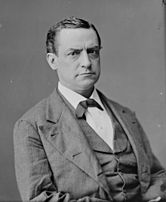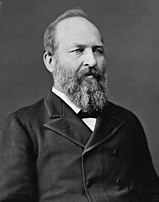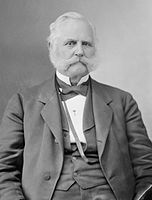United States House election, 1878
|
|
|||||||||||||||||||||||||||||||||
|---|---|---|---|---|---|---|---|---|---|---|---|---|---|---|---|---|---|---|---|---|---|---|---|---|---|---|---|---|---|---|---|---|---|
|
|||||||||||||||||||||||||||||||||
|
All 293 seats in the U.S. House of Representatives 147 seats were needed for a majority |
|||||||||||||||||||||||||||||||||
|
|||||||||||||||||||||||||||||||||
|
|||||||||||||||||||||||||||||||||
Elections to the United States House of Representatives were held in 1878 for Representatives to the 46th United States Congress. These elections occurred in the middle of President Rutherford B. Hayes's term.
With a sour economy as the nation's pressing issue, both major parties lost seats to the new Greenback Party, which was established to promote the long-term use of paper money as a solution to stop enormous economic fluctuations. The Democratic Party remained the largest party, but lost its majority. However, it allied with several independent politicians and was able to remain in power. Notable freshmen included James B. Weaver, who would later run for president as the Greenback candidate in 1880 and the Populist candidate in 1892. This was the fourth and last recorded House election where both major parties lost seats at the same time.
In 1845, Congress passed a law providing for a uniform nationwide date for choosing Presidential electors. This law did not affect election dates for Congress, which remained within the jurisdiction of State governments, but over time, the States moved their Congressional elections to this date as well. In 1878–79, there were still 7 states with earlier election dates, and 1 state with a later election date:
California's elections were the last time that a state held congressional general elections after November.
...
Wikipedia



